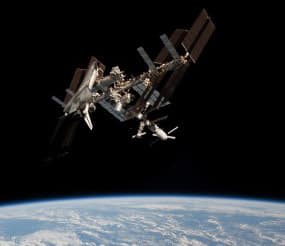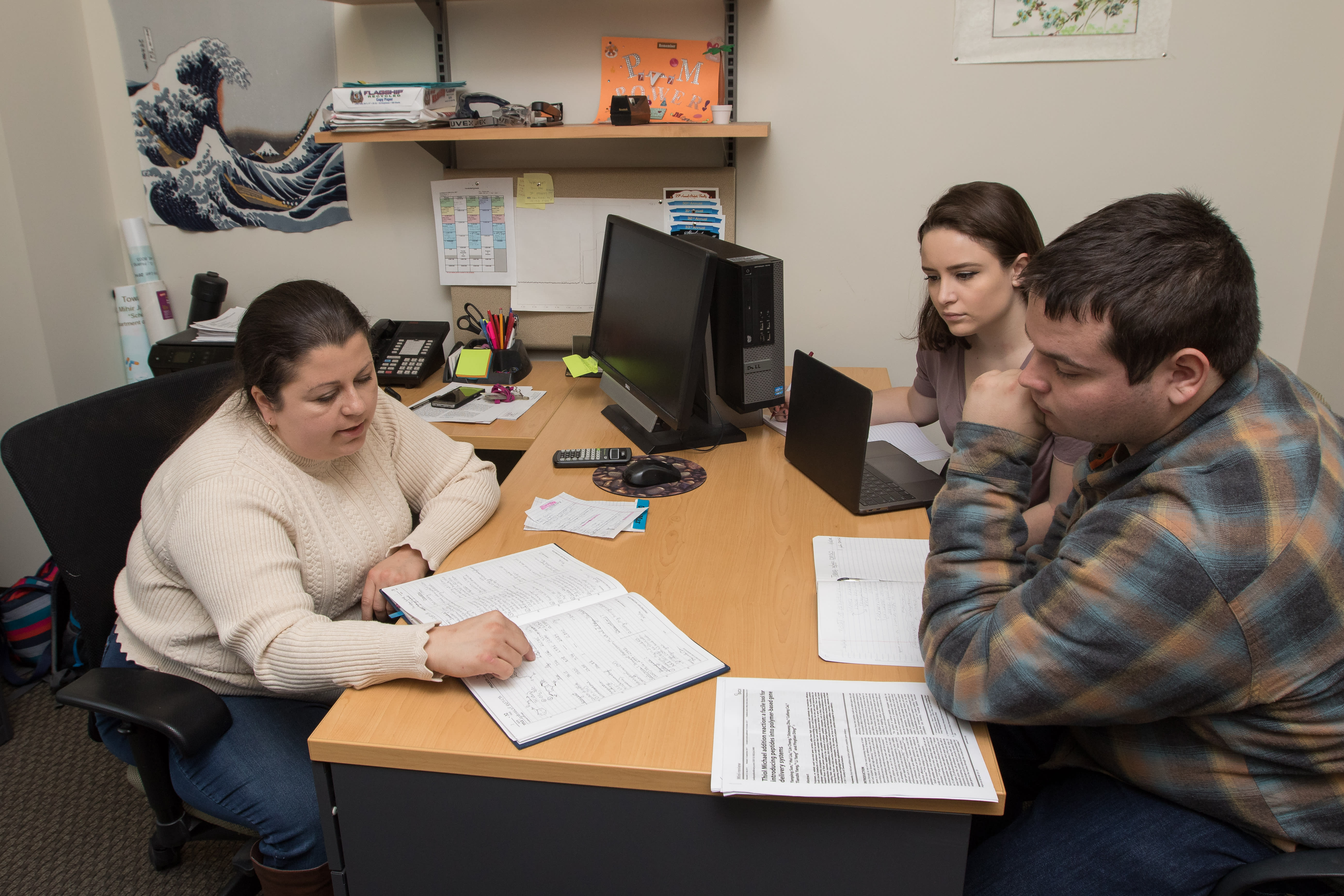This project is now in update mode. Check back regularly to see how things are progressing.
Student Spaceflight Experiments Program (SSEP) 2020
What is the SSEP?
The Student Spaceflight Experiments Program (SSEP) is designed to teach students to become professional scientists by having them undertake an authentic research project. Students compete in a competition to design an experiment that tests the effects of microgravity (weightlessness) on a physical, chemical, or biological system.

The teams of undergraduates produced approximately ten experimental proposals which were judged by the Stockton review panel last fall. Three finalists were selected, and their proposals were submitted to the National Center for Earth and Space Science Education (NCESSE) for final selection. The winning experiment will be flown to the International Space Station to be completed by astronauts!
What is the Impact?
This program provides faculty-mentored student research at the undergraduate level. Students use the principles of the scientific method to address a real-world scientific problem. Through participation in this program, our students are expanding the frontiers of microgravity research. They are also developing soft skills necessary for success in future employment, such as how to effectively communicate science to other scientists in a formal review process, as well as learning to communicate scientific findings to the community at large.

How You Can Help
This is our fourth mission (M14) that Stockton has sent an experiment to the International Space Station (ISS). We are excited to see what discoveries will be revealed from our experiment, but in order to further the scientific process, we need your help! Gifts of every size are vitally important, and will directly support this unique and vital program. The impact of your donation will inspire our students and future STEM leaders.
Thanks to our loyal alumni, faculty, staff, and friends of Stockton, $2,500 was raised for this program in 2018. Our goal is to meet and exceed that amount to help today's Ospreys attend this year's launch, and present their project results at the SSEP National Conference at the Smithsonian National Air and Space Museum in Washington, D.C.
Student Sophia Bradach, a freshman Environmental Science major, is working with faculty mentor Dr. Peter Straub, Dean of Natural Sciences and Mathematics and Professor of Biology/Molecular Biology, to research the Effects of Nitrogen Fixation in Pisum Sativum in Microgravity.

The proposal development and competition for Mission 14 of the Student Spaceflight Experiment Program (SSEP) at Stockton University was undertaken during the fall 2019 term. This competition led to the selection of the proposal “The Effects of Nitrogen Fixation in Pisum sativum (pea) in Microgravity” by Sophia Bradach, undergraduate (freshman) Environmental Science major. The experiment is currently under flight safety review in preparation for launch to the International Space Station expected on SpaceX-21, August 5th, 2020. This experiment will test the ability of symbiotic bacteria Rhizobium sp. to infect the pea roots and for the plants to produce fixed nitrogen from atmospheric nitrogen (N2) in the microgravity environment. The project will be launched aboard SpaceX-21 to the International Space Station in August 2020 and is expected to be at the ISS for 4-6 weeks before return to Stockton University for analysis of evidence of root infection and development of roots nodules associated with nitrogen fixation and analysis of total nitrogen in the plants.
NOTE: Mission 13 Update
Stockton SSEP Mission 13 students, Daniel Stoyko, Matthew Elko and Joseph Romanowski attended the 9th Annual SSEP National Conference at the National Air and Space Museum in Washington, D.C. last June where they presented the "Analysis of double stranded break repair in haploid Saccharomyces cerevisiae under spaceflight conditions" experiment design. Accompanying the group at the conference were Mission 12 winners, alumni Chioma Uka, Daniel Schneider and Christina Tallone who also presented their findings to their experiment, “Effects of Microgravity on PEGMA Based Self-Assembly and Impacts on Drug Delivery Systems.”. Both groups were recognized by director of the National Center for Earth and Space Science Education, Dr. Jeff Goldstein, who called our students 'role models' — something for the younger students to strive to achieve! Later in the summer, Mission 13 students were able to attend the launch of SpaceX Gemini and the witness the first stage Falcon 9 of the two-stage rocket return to Cape Canaveral.
Unfortunately, due to a human error on the International Space Station (ISS), Stockton's Mission 13 research project was not able to be completed. The team is in the process of repackaging their experiment which will be sent to ISS next month. We will be sure to share additional information about their experiment in the future.
*The Student Space Flight Experiments Program [or “SSEP”] is a program of the National Center for Earth and Space Science Education (NCESSE) in the U.S. and the Arthur C. Clarke Institute for Space Education Internationally. It is enabled through a strategic partnership with DreamUp PBC and NanoRacks, LLC, which are working with NASA under a Space Act Agreement as part of the utilization of the International Space Station as a National Laboratory.*
$10
Earth
Support at this level will fund the final research poster for the students' presentation at the SSEP Conference.
$25
Troposphere
Support at this level funds the cost of materials required for the experiment.
$50
Stratosophere
Support at this level assists in payload integration and travel of the experimental material to and from NASA Space Center, Houston, TX.
$100
Mesosphere
Support at this level assists in boosting the payload to the International Space Station.
$150
Ionosphere
Support at this level funds lodging expenses for a student at Cape Canaveral for rocket launch.
$250
Thermosphere
Support at this level funds a student to travel to the SSEP Conference in Washington, D.C. to present their findings to academic colleagues.
$500
Exobase
Support at this level funds the cost for a student to attend the rocket launch and present at the SSEP Conference—an out-of-this-world experience for a future scientist!



